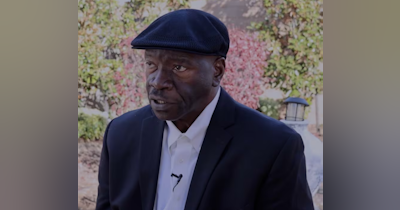In the world of addiction recovery, stories of transformation and healing are not uncommon. Yet, some stories stand out, shedding light on the deeper, often overlooked aspects of addiction and recovery. Mary Giuliani's journey is one such story, where the focus shifts from merely treating the symptoms of addiction to understanding its root causes – childhood trauma.
In this blog post, we delve into Mary Giuliani's remarkable podcast episode on "Between the Before & After," where she shares her journey from addiction to recovery and the profound insights she gained along the way. Mary's story serves as a beacon of hope, reminding us that healing is possible, even when the roots of addiction run deep.
Understanding the ACEs Study: A Shocking Revelation
Mary's story begins with a groundbreaking study known as the Adverse Childhood Experiences (ACEs) study. The ACEs study, conducted by the CDC and Kaiser Permanente, aimed to explore the correlation between childhood experiences and adult health outcomes. It asked participants ten questions related to their childhood experiences, ranging from physical abuse to witnessing domestic violence.
The results were staggering. Mary explains that individuals who had experienced four or more ACEs were seven times more likely to become alcoholic. This revelation challenged the conventional narrative that addiction was solely a result of poor choices or lack of willpower. It hinted at a deeper connection between trauma and addictive behaviors.
Trauma: More Than Meets the Eye
One of the most crucial takeaways from Mary's journey is the recognition that trauma comes in many forms. It's not limited to physical or sexual abuse; emotional abuse, neglect, or growing up in a household with addiction or mental health issues can also be traumatic. This understanding broadens the scope of trauma's impact on individuals, as Mary herself initially believed that her struggles didn't qualify as trauma-related.
Mary's story highlights the critical role of emotional and relational trauma in shaping one's life. It brings to light the fact that unresolved childhood trauma can lead to a host of coping mechanisms, such as addiction, as individuals seek to numb the pain or fill emotional voids.
The Brain's Response to Trauma: A Neurological Injury
One of the most eye-opening aspects of Mary's journey is her exploration of the brain's response to trauma. Childhood trauma, she explains, can alter the brain's development, particularly the underdevelopment of the frontal part responsible for impulse control and emotional regulation. This insight provides a scientific basis for understanding why individuals with trauma histories often struggle with impulse-driven behaviors like addiction.
Understanding the brain's response to trauma is essential in realizing that addiction is not merely a behavioral problem. It's a neurological injury that requires specialized approaches to healing. This realization challenges the stigma surrounding addiction, shifting the perspective from judgment to compassion.
Healing Trauma: A Journey of Self-Compassion
Mary's journey towards healing was multifaceted and deeply transformative. She emphasizes the importance of self-compassion and self-understanding in the recovery process. Recognizing that her addiction was an attempt to solve a problem – the pain of unresolved trauma – allowed her to let go of shame and self-blame.
She discusses the value of body and brain-based interventions in healing trauma, highlighting that talk therapy alone may not be sufficient. Mary's personal growth journey and her dedication to understanding her body's responses to trauma were pivotal in her recovery. Her experiences demonstrate that healing is not a one-size-fits-all approach and may involve various modalities.
Conclusion: A Message of Hope
Mary Giuliani's journey from addiction to recovery is a powerful testament to the resilience of the human spirit. Her story unveils the hidden roots of addiction, emphasizing the role of childhood trauma and its impact on the brain and body. It challenges society's preconceived notions about addiction, urging us to replace judgment with empathy and understanding.
As we reflect on Mary's transformative journey, we are reminded that healing is possible for everyone, regardless of the depths of their struggles. Her story serves as a message of hope for those grappling with addiction or the effects of childhood trauma. It encourages us to embark on a path of self-discovery, self-compassion, and ultimately, healing.
In Mary Giuliani's words, "You're not bad or broken, and you can heal with the right support." Let her journey inspire us to break free from the chains of shame and embark on our own paths toward healing and wholeness.








